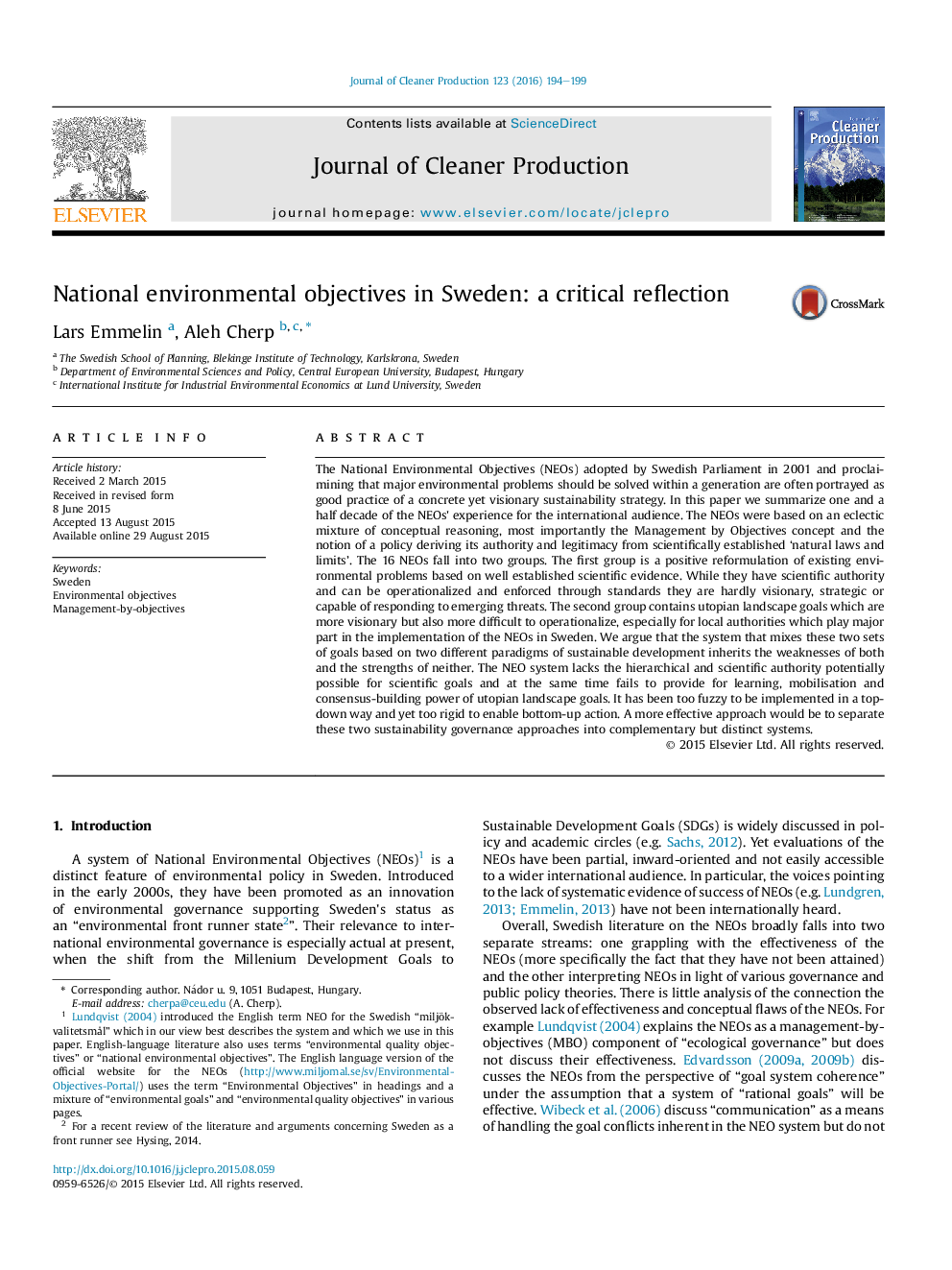| کد مقاله | کد نشریه | سال انتشار | مقاله انگلیسی | نسخه تمام متن |
|---|---|---|---|---|
| 1744230 | 1522126 | 2016 | 6 صفحه PDF | دانلود رایگان |
• National Environmental Objectives (NEOs) were adopted by Swedish Parliament in 2001.
• NEOs aimed to solve major environmental problems within one generation.
• NEOs contain two types of objectives: ‘inverted problems’ and ‘utopian landscape goals’.
• The two types of objectives reflect two paradigms of sustainability.
• Effectiveness of NEOs is undermined by mixing goals that require different types of governance.
The National Environmental Objectives (NEOs) adopted by Swedish Parliament in 2001 and proclaimining that major environmental problems should be solved within a generation are often portrayed as good practice of a concrete yet visionary sustainability strategy. In this paper we summarize one and a half decade of the NEOs' experience for the international audience. The NEOs were based on an eclectic mixture of conceptual reasoning, most importantly the Management by Objectives concept and the notion of a policy deriving its authority and legitimacy from scientifically established ‘natural laws and limits’. The 16 NEOs fall into two groups. The first group is a positive reformulation of existing environmental problems based on well established scientific evidence. While they have scientific authority and can be operationalized and enforced through standards they are hardly visionary, strategic or capable of responding to emerging threats. The second group contains utopian landscape goals which are more visionary but also more difficult to operationalize, especially for local authorities which play major part in the implementation of the NEOs in Sweden. We argue that the system that mixes these two sets of goals based on two different paradigms of sustainable development inherits the weaknesses of both and the strengths of neither. The NEO system lacks the hierarchical and scientific authority potentially possible for scientific goals and at the same time fails to provide for learning, mobilisation and consensus-building power of utopian landscape goals. It has been too fuzzy to be implemented in a top-down way and yet too rigid to enable bottom-up action. A more effective approach would be to separate these two sustainability governance approaches into complementary but distinct systems.
Journal: Journal of Cleaner Production - Volume 123, 1 June 2016, Pages 194–199
